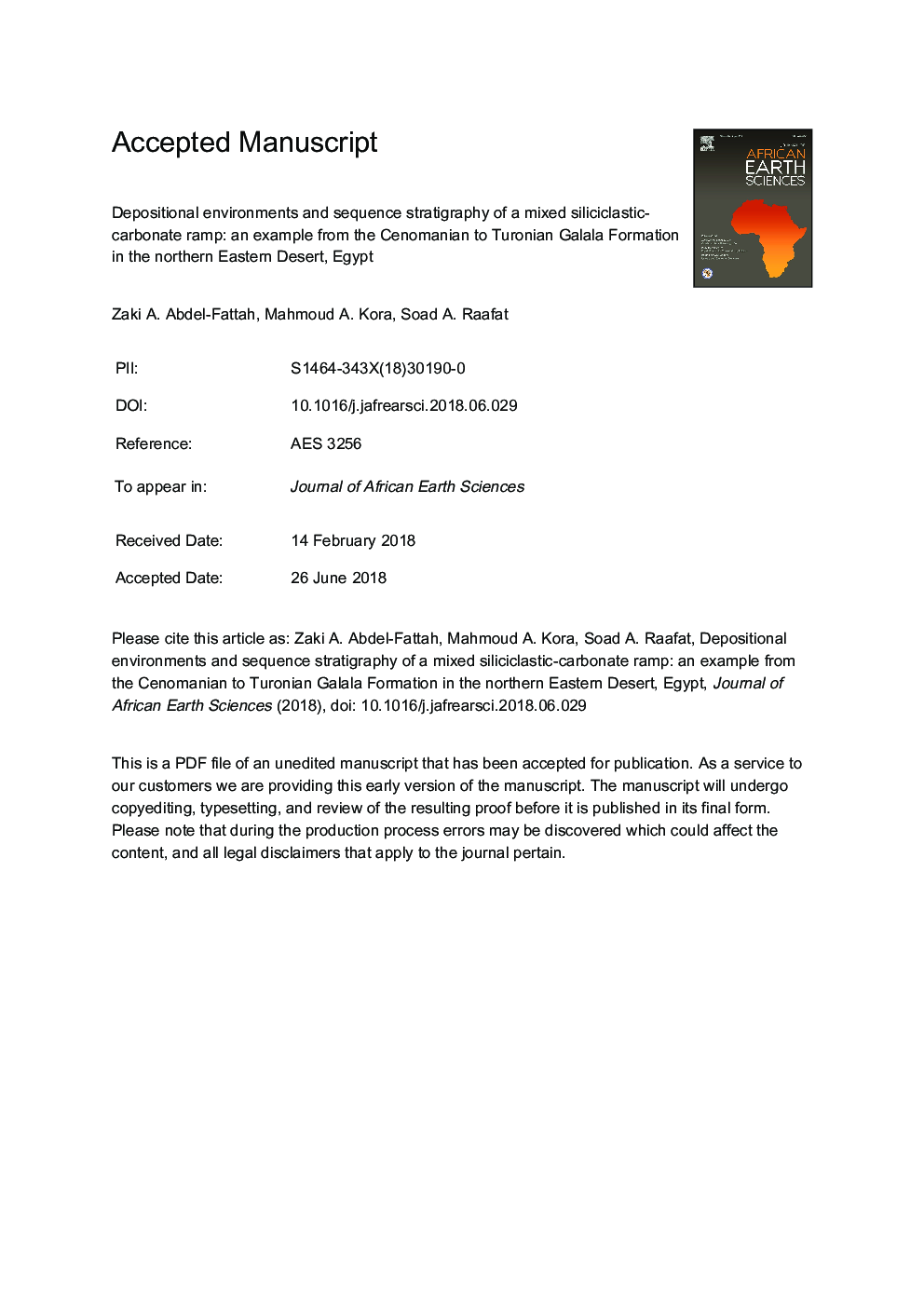| کد مقاله | کد نشریه | سال انتشار | مقاله انگلیسی | نسخه تمام متن |
|---|---|---|---|---|
| 8913364 | 1640162 | 2018 | 53 صفحه PDF | دانلود رایگان |
عنوان انگلیسی مقاله ISI
Depositional environments and sequence stratigraphy of a mixed siliciclastic-carbonate ramp: An example from the cenomanian to Turonian Galala Formation in the northern Eastern Desert, Egypt
ترجمه فارسی عنوان
محیط های رسوبی و چینه شناسی پیوسته یک مخروط کربناتی کربناتی مخلوط: نمونه ای از سنگواگانیان به سازند گالالی تورونی در صحرای شمالی مصر
دانلود مقاله + سفارش ترجمه
دانلود مقاله ISI انگلیسی
رایگان برای ایرانیان
کلمات کلیدی
موضوعات مرتبط
مهندسی و علوم پایه
علوم زمین و سیارات
زمین شناسی
چکیده انگلیسی
Sedimentologic, stratigraphic and ichnological data are integrated to develop a model linking base-level changes to depositional evolution of a mixed siliciclastic-carbonate ramp. Two consecutive depositional stages are suggested for interpreting architectural development of the reported five siliciclastic facies associations (FA1 to FA5) and six carbonate facies types (FT1 to FT6) in the Galala Formation. The Late Cenomanian siliciclastic-dominated stage shows offshore transition and shoreface siliciclastic succession, in addition to lagoonal coastal-plain deposits. The Late Cenomanian to Early Turonian siliciclastic-carbonate stage is characterized by alternating offshore mudstone and carbonate facies types deposited in outer/distal middle ramp to proximal middle/inner ramp setting. Two third-order depositional sequences (DS1 and DS2) are defined within the Cenomanian to Turonian succession. The recognized sequence boundaries (SB1, SB2 and SB3) correspond to the global Cretaceous eustatic curve as well as to counterparts in Egypt, Jordan, Tunisia and American/European basins. The SB1 surface signifies subaerial exposure that was followed by early Late Cenomanian transgression and deposition of siliciclastic-dominated strata of DS1. Subsequent Late Cenomanian base-level fall resulted in generating the sequence boundary SB2. The SB3 surface coincides with Middle Turonian base-level fall, which heralds the boundary between the Early and Middle Turonian. The proposed model shows how carbonate production is controlled basically by the base-level changes and sediment supply, in addition to other paleoecologic carbonate-production factors.
ناشر
Database: Elsevier - ScienceDirect (ساینس دایرکت)
Journal: Journal of African Earth Sciences - Volume 147, November 2018, Pages 352-373
Journal: Journal of African Earth Sciences - Volume 147, November 2018, Pages 352-373
نویسندگان
Zaki A. Abdel-Fattah, Mahmoud A. Kora, Soad A. Raafat,
